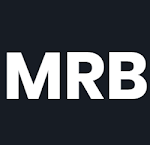In general terms, the Redirect 301 or Redirection 301 is an instruction in the servers that informs that Page A is now Page B so that when the visitor accesses Page A they are automatically redirected to the address of Page B.
Even being part of the technical universe, Redirect 301 is a tool that every Marketing professional should know since it can have a strong impact on the user experience and also on the results of your company in search tools.
What are the numerical codes 301, and 404 and what do they mean?
When you type a URL into your browser, it will go to the web server, where the page is hosted, and look for the content that is there. The server, for its part, returns with a code for your browser. Normally this code is HTTP 200, which means that your page is ok and thus the site is loaded normally. However, there are other response code options:
- 500 – Internal Server Error – indicates an internal failure in the server. Several reasons can generate this error, such as reading permission errors and even a stability failure on the site;
- 404 – Page not Found – indicates that the page was not found. That means that the file (page) hosted on this server was not found, we will comment later on this error and how to solve it;
- 302 – Temporary redirect – is a redirection of a page to another address, but with the indication of a temporary and non-permanent nature.
Among these codes, there is 301, which informs your browser that the page or website accessed has permanently changed its address;
Why and what are the main cases in which 301 Redirects should be used
The main reason to use a 301 redirect is that it transmits almost entirely the authority of the old address to the new one, which does not happen with the 302 redirects or with redirects made through javascript.
Therefore, the 3 most common situations in which the 301 redirect makes perfect sense are:
Migration of pages that no longer exist (404 error):
In some cases, it's only natural that you want a page, campaign, or other content on your site to cease to exist. Just taking the material off the air will not keep the site with the best experience for the visitor, since when arriving at one of those addresses, the user will receive that famous “Page not found” notice (Error 404).
In this case, the ideal is to send the user to a friendlier page, preferably with content related to the old one.
Website Migration
There are cases where the intention is not to change a page, but the entire site.
Moz, one of the leading SEO tools on the market, changed its name some time ago to Moz. With that, came the job of moving the entire site over to his new domain. Since they already had a lot of authority in their old address and wanted to keep it in the new one, the 301 redirects ended up being the perfect alternative.
Everyone who accesses the old address already reaches the new page and Google understands and values the new site in the same way it would the old one.
Avoid duplicate content
Did you know that www.yourcompany.com and yourcompany.com are different addresses? For Google, this can be considered duplicate content, in addition to diluting the authority of the pages. Doesn't sound good, does it?
That is why here at RD Station when entering rdstation.com/es/, there is a 301 redirect that takes you to the address www.rdstation.com/es/. This way, we managed to bring users who type differently to the same page and unify their authority for Google.
If your site doesn't do that, you should start doing it: chances are good that your results will improve a lot when this problem is fixed.
How Google tackles the 301 Redirect
In the following video we can see the explanation of Matt Cuts, the main person in charge of the Google Webspam team (which is responsible for a large part of the changes in the algorithm of the tool), explaining how Google sees the 301 redirects:
Did I correctly redirect the pages of my site?
One way to know if the 301 redirects is working is to use Google Webmaster Tools, an excellent tool for general site analysis.
If the pages were not correctly redirected, there will be an increase, indicated in GWT, of pages not found - 404 error. This increase in the number of pages not found in the long term will reduce the ranking of your site since it does not offer a good user experience.
With this analysis, it is easy to identify which addresses were not adjusted and that also need to be redirected.
How to do a 301 redirect
As we indicated, a 301 redirect is done on the server, so it will depend a lot on the type of server your company uses.
That more technical aspect isn't something marketers necessarily need to know about, but in case you want to recommend it for a developer, there's a good guide at the following link:
This post was originally written by André Siqueira in Portuguese and contains adaptations made by the author for the Latin American and Spanish markets.


